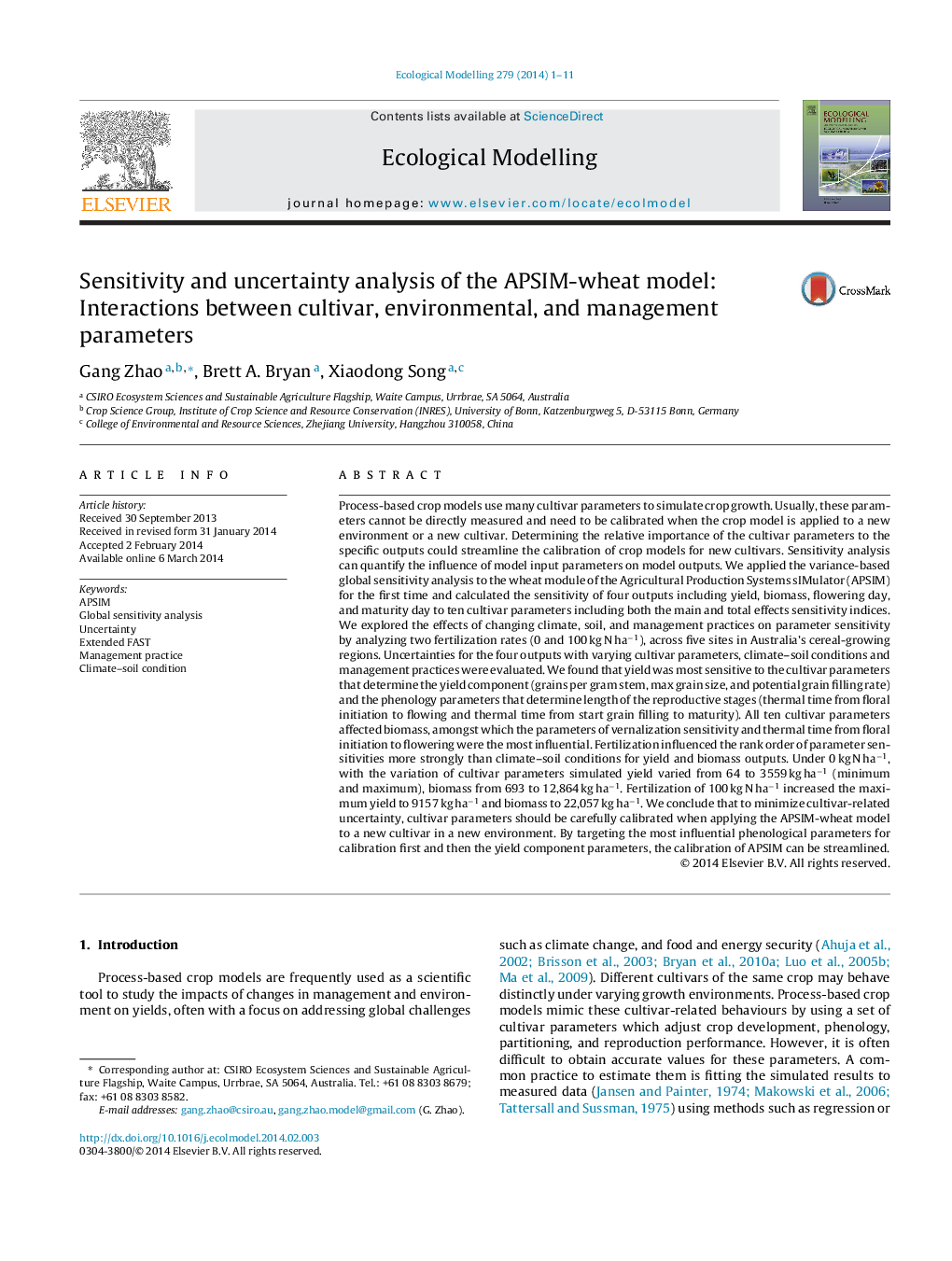| کد مقاله | کد نشریه | سال انتشار | مقاله انگلیسی | نسخه تمام متن |
|---|---|---|---|---|
| 4375969 | 1617467 | 2014 | 11 صفحه PDF | دانلود رایگان |

• Global sensitivity and uncertainty analysis were applied to the APSIM-wheat model.
• Sensitivities of four key outputs to cultivar parameters were assessed.
• Interactions between cultivar, environmental and management parameters were found.
• Fertilization significantly affected the sensitivities of cultivar parameters.
• Cultivar parameters need to be carefully calibrated to reduce uncertainty.
Process-based crop models use many cultivar parameters to simulate crop growth. Usually, these parameters cannot be directly measured and need to be calibrated when the crop model is applied to a new environment or a new cultivar. Determining the relative importance of the cultivar parameters to the specific outputs could streamline the calibration of crop models for new cultivars. Sensitivity analysis can quantify the influence of model input parameters on model outputs. We applied the variance-based global sensitivity analysis to the wheat module of the Agricultural Production Systems sIMulator (APSIM) for the first time and calculated the sensitivity of four outputs including yield, biomass, flowering day, and maturity day to ten cultivar parameters including both the main and total effects sensitivity indices. We explored the effects of changing climate, soil, and management practices on parameter sensitivity by analyzing two fertilization rates (0 and 100 kg N ha−1), across five sites in Australia's cereal-growing regions. Uncertainties for the four outputs with varying cultivar parameters, climate–soil conditions and management practices were evaluated. We found that yield was most sensitive to the cultivar parameters that determine the yield component (grains per gram stem, max grain size, and potential grain filling rate) and the phenology parameters that determine length of the reproductive stages (thermal time from floral initiation to flowing and thermal time from start grain filling to maturity). All ten cultivar parameters affected biomass, amongst which the parameters of vernalization sensitivity and thermal time from floral initiation to flowering were the most influential. Fertilization influenced the rank order of parameter sensitivities more strongly than climate–soil conditions for yield and biomass outputs. Under 0 kg N ha−1, with the variation of cultivar parameters simulated yield varied from 64 to 3559 kg ha−1 (minimum and maximum), biomass from 693 to 12,864 kg ha−1. Fertilization of 100 kg N ha−1 increased the maximum yield to 9157 kg ha−1 and biomass to 22,057 kg ha−1. We conclude that to minimize cultivar-related uncertainty, cultivar parameters should be carefully calibrated when applying the APSIM-wheat model to a new cultivar in a new environment. By targeting the most influential phenological parameters for calibration first and then the yield component parameters, the calibration of APSIM can be streamlined.
Journal: Ecological Modelling - Volume 279, 10 May 2014, Pages 1–11